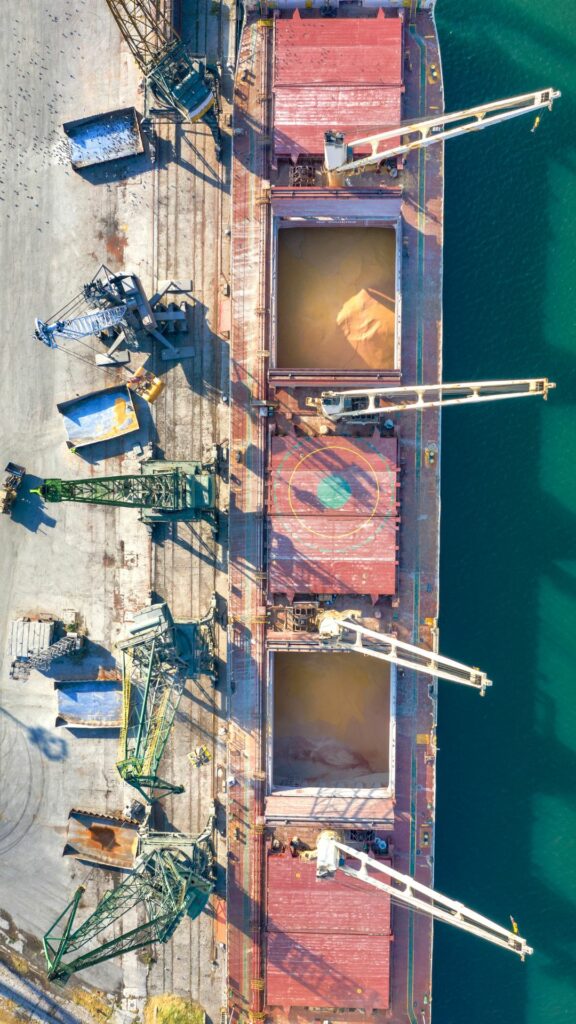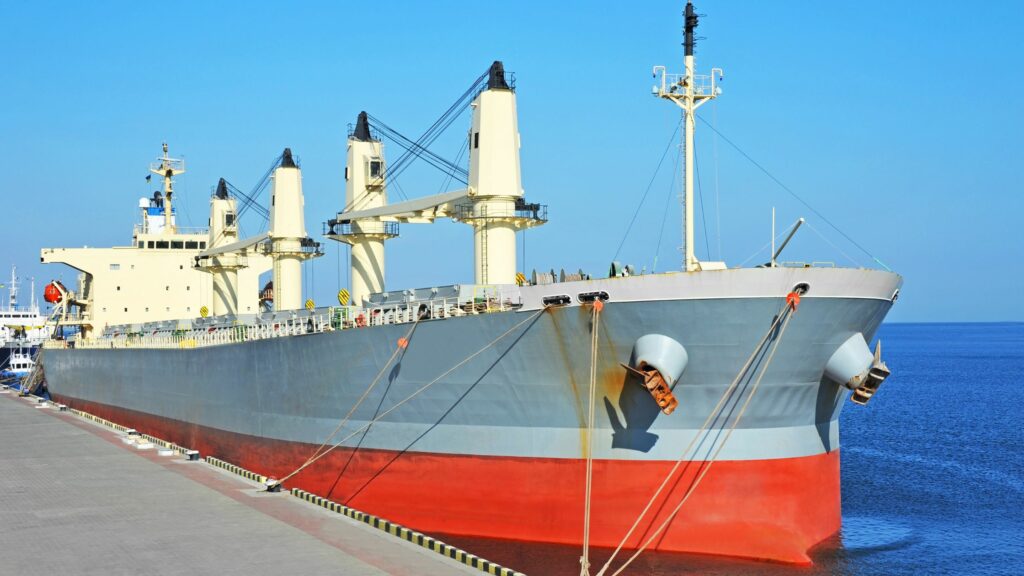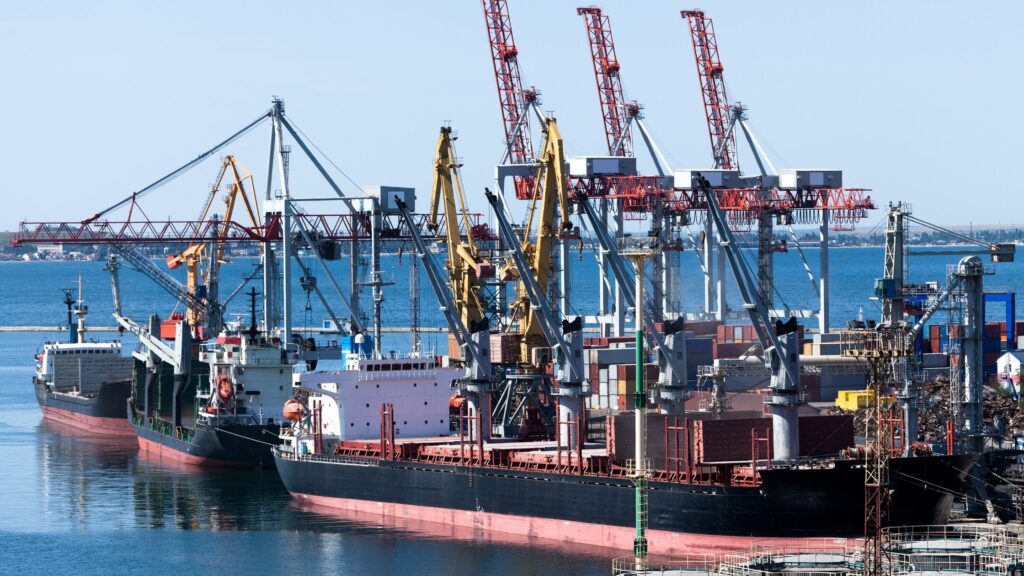Physical Address
304 North Cardinal St.
Dorchester Center, MA 02124
Trip Time Charter is a type of contract that offers unmatched flexibility and efficiency for short-term, variable shipping needs in the complex world of freight shipping. Comprised of Voyage Charters, Time Charters, and Bareboat Charters, Trip Time Charter contracts provide a range of options to suit different cargo operations and business requirements.

A Trip Time Charter is a contractual agreement in the freight shipping industry that grants a charterer the right to lease a vessel from a shipowner for the purpose of transporting goods over a single, specified journey or for a predetermined duration. This type of charter stands out for its flexibility and control, offering a tailored solution that can be meticulously aligned with the unique requirements of a cargo operation. The agreement encompasses critical details such as the duration of the charter, the charter rate, specific route, and cargo details, ensuring a high level of customization for businesses.
The versatility of Trip Time Charters makes them an appealing option for companies seeking cost-effective ways to transport goods, respond to fluctuating market demands, or manage shipping logistics with pinpoint accuracy. It serves as a strategic tool, enabling businesses to navigate the intricacies of maritime transport with greater ease and efficiency, thus ensuring the timely and safe delivery of their cargo. Through this charter type, companies gain the ability to adapt to the dynamic shipping landscape, leveraging the benefits of both short-term commitment and direct control over cargo handling and voyage specifics.
Companies use Trip Time Charters for their flexibility and efficiency. This charter type is particularly advantageous for meeting specific logistical requirements, adapting to market demands, and managing shipping operations with precision.
Trip Time Charters offer critical timing precision, making them indispensable for industries where the timely delivery of goods is paramount. For instance, the agricultural sector relies on such charters to transport perishable products to markets before spoilage. Similarly, the construction industry utilizes these charters to receive materials within strict project timelines, ensuring no delays in project execution.
The ability to customize shipping routes and schedules provides companies with significant operational advantages. A notable example includes a retail company rerouting its shipment to avoid congested ports during the holiday season, ensuring on-time delivery of goods. Another case is a manufacturing firm using Trip Time Charters to capitalize on shorter, more efficient routes, reducing shipping times and costs.
Trip Time Charters are particularly beneficial for industries experiencing seasonal demand fluctuations. Retailers, for example, might use these charters to increase their shipping capacity ahead of the holiday shopping season, ensuring sufficient stock levels. Similarly, the fashion industry employs Trip Time Charters to align with seasonal fashion cycles, transporting new collections to stores in time for the new season.
A Trip Time Charter agreement outlines the terms under which a charterer leases a vessel from a shipowner. These agreements are intricate, covering various aspects that ensure both parties have a clear understanding of the charter’s terms. Key components include the duration of the charter, charter rate, specific route and cargo details, and laytime and demurrage terms.
Each of these components plays a crucial role in the successful execution of a charter agreement.
| Component | Description | Examples/Details |
|---|---|---|
| Duration of the Charter | Specifies how long the charterer will use the vessel. | Ranges from a few weeks to several months, depending on the specific needs of the business. |
| Charter Rate | The cost of leasing the vessel for the agreed period. | Varies with vessel size, type, and market conditions. For instance, larger or specialized vessels may command higher rates. |
| Specific Route and Cargo Details | Outlines the journey the vessel will undertake and the cargo it will carry. | Includes cargo type, quantity, and any special handling requirements. For hazardous materials, routes may be chosen to minimize risk. |
| Laytime and Demurrage Terms | Defines the allowed period for loading/unloading (laytime) and penalties for delays (demurrage). | Average laytime allowances might range from 48 to 72 hours, with demurrage rates specified for delays beyond this period. |
The duration of the charter is pivotal, as it directly impacts the charter’s cost and logistical planning. It ensures the vessel’s availability aligns with the charterer’s requirements, whether for short-term projects or longer commitments.
The charter rate is influenced by several factors, including market conditions, the length of the charter, and the vessel’s specifications. This rate determines the financial commitment of the charterer and is crucial for budget planning.
This component is essential for ensuring the vessel’s journey and cargo align with the charterer’s needs. It includes detailed information on the cargo type and the specific route the vessel will take, which is particularly important for specialized or hazardous cargo.

Laytime and demurrage terms are critical for managing the loading and unloading process efficiently. They specify the timeframe allowed for these operations and the financial penalties for any delays, impacting the overall cost and timing of the charter. Incorporating these specifics into the Trip Time Charter agreement section provides a clearer, more detailed understanding of what these agreements entail.
The use of a markdown table helps organize this information, making it easily accessible and understandable for readers, thereby enhancing the article’s helpfulness and relevance.
The charter rate in a Trip Time Charter agreement is influenced by a combination of factors that reflect the agreement’s cost relative to the value it offers. These factors include market conditions, the length of the charter, the type and size of the vessel, and the cargo type and quantity. Understanding how each of these elements impacts the charter rate can provide charterers and shipowners with insights into strategic planning and negotiation.
| Factor | Impact on Charter Rate | Example |
|---|---|---|
| Market Conditions | Rates fluctuate based on supply and demand dynamics within the shipping industry. | During peak shipping seasons, demand increases, leading to higher charter rates. Conversely, in periods of low demand, rates may decrease. |
| Length of the Charter | Longer charters may have different rate implications compared to short-term hires. | A 6-month charter might have a lower daily rate compared to a 1-month charter due to the stability it provides to the shipowner. |
| Type and Size of the Vessel | Different vessels have varying operational costs and capabilities, affecting the rate. | A specialized tanker for chemicals may command a higher rate than a general cargo vessel due to its unique features and operational costs. |
| Cargo Type and Quantity | Special requirements for cargo can influence the rate. | Bulk cargoes like coal or grain might have lower rates per ton compared to specialized cargoes requiring specific handling, like refrigerated goods or hazardous materials. |
Market conditions significantly influence charter rates through the interplay of supply and demand. For instance, a surge in oil production might increase the demand for tankers, thereby elevating charter rates for such vessels. Conversely, an economic downturn could reduce demand for shipping capacity, leading to lower rates.
The charter’s duration is a critical factor, with long-term agreements potentially offering more favorable rates due to the guaranteed utilization of the vessel. For example, a shipowner might offer a discount on the daily rate for a charter agreement that spans several months or years, as opposed to a higher rate for shorter, more sporadic engagements.
The specific vessel type and its size play a crucial role in determining the charter rate. Larger vessels or those with specialized equipment (e.g., LNG carriers, heavy-lift ships) often have higher rates due to their increased capabilities and operational costs. The choice of vessel is dictated by the cargo’s nature and the voyage’s requirements, directly impacting the charter rate.
The type of cargo and its volume significantly affect the charter rate. Transporting hazardous materials or commodities requiring special handling conditions (like refrigerated goods) can increase the rate. Similarly, the quantity of cargo influences the rate, with larger volumes potentially benefiting from economies of scale.
Incorporating these specifics into the “How is the charter rate determined?” section provides a clearer, more detailed understanding of the factors influencing charter rates. The use of a markdown table helps organize this information, making it easily accessible and understandable for readers, thereby enhancing the article’s helpfulness and relevance.
The charterer plays a pivotal role in a Trip Time Charter agreement, taking on several key responsibilities that are crucial for the successful execution of the charter. These responsibilities range from financial commitments to logistical coordination, ensuring the smooth operation of the charter from start to finish.
| Responsibility | Specific Tasks or Obligations | Example |
|---|---|---|
| Paying the agreed charter rate | Ensuring timely financial compensation to the shipowner | Payment schedules may be outlined in the agreement, specifying due dates and amounts. |
| Covering fuel costs | Managing the expense of fuel for the voyage | Charterers might negotiate fuel clauses to manage price fluctuations. |
| Ensuring cargo is ready for transport | Preparing, packaging, and consolidating goods for loading | For hazardous materials, ensuring proper documentation and packaging as per international regulations. |
| Arranging for cargo loading and unloading | Coordinating port services and labor for efficient cargo handling | Hiring stevedores or port workers to handle cargo operations within the agreed laytime. |

In the context of a Trip Time Charter, the shipowner is entrusted with several pivotal responsibilities that are essential for the charter’s seamless operation. A key duty is ensuring the provision of a seaworthy vessel, which means the ship must be fully prepared, both structurally and functionally, to meet the safety and operational standards required for the journey. This includes rigorous maintenance and adherence to all relevant maritime safety regulations.
The shipowner is also tasked with crewing and maintaining the vessel throughout the charter period. This involves not only selecting a qualified and skilled crew but also undertaking all necessary maintenance and repairs to keep the vessel in prime condition for safe and efficient operation. Securing comprehensive insurance for the vessel stands as another critical responsibility, protecting against potential damages or liabilities incurred during the voyage.
This coverage is crucial for mitigating financial risks associated with maritime operations, offering protection to both the shipowner and the charterer. Lastly, ensuring compliance with maritime laws and regulations is imperative. The shipowner must navigate a complex landscape of international and local regulations, covering everything from environmental standards to safety protocols, to guarantee the vessel’s operations are legally sound.
These responsibilities collectively underscore the shipowner’s role in facilitating a successful and compliant charter operation.
The shipowner’s primary obligation in a Trip Time Charter is providing a seaworthy vessel. This means the ship must be thoroughly prepared to meet and exceed safety and operational standards necessary for the voyage. Ensuring seaworthiness involves regular maintenance, inspections, and adherence to rigorous maritime safety regulations, safeguarding the well-being of the crew, the integrity of the cargo, and environmental safety.
Crewing and maintaining the vessel are critical responsibilities that fall to the shipowner. This includes recruiting a skilled and experienced crew capable of navigating the vessel safely and efficiently. In addition, the shipowner must commit to ongoing maintenance and timely repairs, keeping the vessel in prime condition throughout the charter to ensure operational excellence and safety.
Securing comprehensive insurance for the vessel is a vital duty of the shipowner. The insurance coverage must encompass a wide range of risks, including but not limited to, damage to the vessel, cargo liability, and environmental pollution. Proper insurance is indispensable for mitigating the financial risks associated with maritime operations, offering a safety net for both the shipowner and the charterer.
Lastly, the shipowner is tasked with ensuring compliance with maritime laws. This encompasses a broad spectrum of regulations, from international treaties on safety and environmental protection to specific local maritime laws. Adhering to these laws is imperative for the legal operation of the vessel, protecting it and its stakeholders from legal issues and penalties, and ensuring a responsible and compliant maritime operation.
Trip Time Charters offer a suite of advantages that cater to the dynamic needs of businesses engaged in maritime shipping. These charters stand out for their cost-effectiveness for short-term needs, flexibility in managing shipping logistics, and direct control over the voyage and cargo handling. Below are comparative analyses and scenarios that highlight the distinct benefits Trip Time Charters provide over other charter types or shipping methods.
Trip Time Charters are particularly cost-effective for businesses with short-term shipping needs, avoiding the long-term commitments and potential inefficiencies associated with longer charter agreements or outright vessel ownership. For example, a company needing to transport a seasonal product, such as holiday decorations, can use a Trip Time Charter to secure transportation for just the necessary period, significantly reducing overhead costs compared to maintaining a year-round charter or owning a vessel that would sit idle during off-peak times.
The flexibility to customize shipping routes and schedules allows companies to respond swiftly to market changes, optimize logistics operations, and meet tight delivery timelines. A case in point involves a global electronics manufacturer that uses Trip Time Charters to adjust shipping routes based on real-time market demand and port congestion. This flexibility enabled the company to avoid delays caused by a sudden port strike, rerouting its shipment to an alternative port and ensuring on-time delivery to its customers, a level of adaptability not typically available with more rigid charter arrangements or fixed shipping lines.
Having direct control over the voyage and cargo handling ensures that businesses can oversee the entire shipping process, from loading to unloading, minimizing the risk of cargo damage and ensuring proper handling of sensitive or high-value goods. For instance, a pharmaceutical company transporting temperature-sensitive vaccines can directly coordinate with the vessel’s crew to monitor and adjust temperature settings in real-time, ensuring the integrity of the vaccines throughout the voyage. This direct involvement is often not possible with other shipping methods, where the cargo might change hands multiple times before reaching its destination.
While Trip Time Charters present significant advantages, they are not without their challenges. A major hurdle is the potential for unexpected costs, which can emerge from fluctuating fuel prices, variations in port fees, or unforeseen delays leading to demurrage charges. These unexpected expenses can affect the overall affordability and efficiency of the charter.
Another significant challenge is the dependence on market conditions for securing favorable rates. The shipping industry’s inherent volatility can lead to substantial fluctuations in charter rates, complicating budgeting and planning efforts for businesses. Adapting to these shifts requires a deep understanding of market dynamics and the ability to swiftly respond to changing conditions.
Risks associated with delays and demurrage represent another area of concern. Various factors, including adverse weather, port congestion, or logistical complications, can cause delays, escalating costs, and disrupting supply chain timelines. Effective management of these risks is essential for minimizing financial impact and ensuring smooth operations.
Furthermore, navigating complex contractual agreements poses a challenge, particularly for those not well-versed in maritime law. Grasping the details of charter agreements is critical to safeguarding a company’s interests and avoiding legal pitfalls. In essence, while Trip Time Charters offer valuable benefits, they also require meticulous management of their inherent risks and challenges to fully leverage their potential.
One of the primary challenges of Trip Time Charters is the potential for unexpected costs. These unforeseen expenses can stem from a variety of sources, such as volatile fuel prices, alterations in port fees, or delays that incur demurrage charges. Navigating these financial uncertainties requires charterers to be vigilant and adaptable, ensuring their budgeting strategies can accommodate such variability and maintain the charter’s cost-effectiveness.
The dependence on market conditions to secure favorable rates is another significant challenge for Trip Time Charters. The fluctuating nature of the shipping industry’s market rates adds a layer of complexity to financial planning, as charter rates can swing dramatically. Businesses must engage in thorough market analysis and strategic charter timing to mitigate this challenge, aiming to lock in rates that align with their budgetary and operational goals.
Delays and demurrage represent critical risks within Trip Time Charters, with the potential to significantly escalate costs and disrupt logistical plans. These delays can be attributed to a range of factors, from inclement weather and port congestion to operational inefficiencies. Effective risk management strategies, including the development of robust contingency plans, are essential to minimize the financial and operational impacts of these delays.
Navigating complex contractual agreements poses a considerable challenge in the realm of Trip Time Charters. The intricate details and extensive stipulations of charter agreements demand a deep understanding to ensure they are aligned with the company’s requirements and protect its interests. This often necessitates legal expertise or specialized knowledge in maritime law, highlighting the importance of thorough contract review and negotiation in the chartering process.